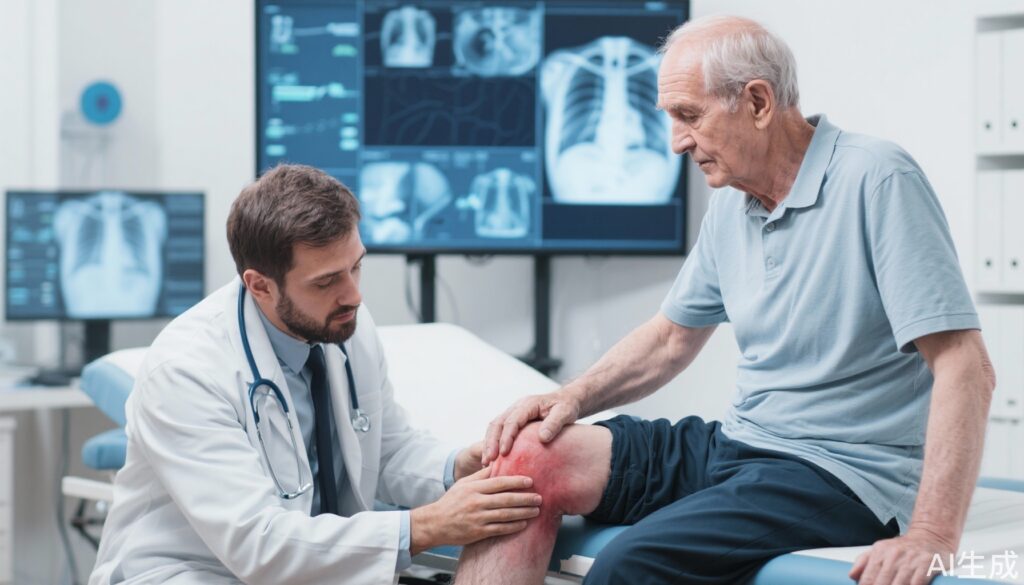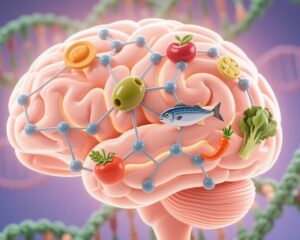Patient Information
A 75-year-old male with a history of atrial fibrillation on chronic warfarin therapy presented to the emergency department with acute onset of swelling and pain in the left thigh. The patient denied any recent trauma, invasive procedures, or strenuous physical activity. His medical history was significant for hypertension and ischemic heart disease. He reported no bleeding from other sites and no fever or systemic symptoms.
Diagnosis
Physical examination revealed a tense, tender swelling over the anterior compartment of the left thigh with mild ecchymosis. Distal pulses were palpable, and neurological examination was intact. Laboratory tests showed an elevated international normalized ratio (INR) of 4.2, hemoglobin of 11.5 g/dL (baseline 13 g/dL), and normal platelet count.
Ultrasound of the thigh demonstrated a heterogeneous fluid collection within the muscle consistent with an intramuscular hematoma. Magnetic resonance imaging (MRI) confirmed a large spontaneous intramuscular hematoma within the quadriceps muscle without evidence of arterial injury.
The diagnosis of spontaneous intramuscular hematoma related to over-anticoagulation on warfarin was established based on clinical presentation, elevated INR, and imaging findings.
Differential Diagnosis
Differential diagnoses considered included:
– Soft tissue infection/abscess: ruled out by absence of systemic infection signs, normal white blood cell counts, and imaging characteristics.
– Muscle strain or tear: absence of trauma and imaging revealing a fluid collection rather than muscle fiber disruption.
– Deep vein thrombosis (DVT): ruled out due to different clinical presentation and Doppler ultrasound findings.
– Tumor or soft tissue mass: imaging did not suggest solid mass characteristics.
Treatment and Management
The patient’s warfarin was immediately withheld, and vitamin K administered to reverse anticoagulation. Supportive care included analgesia and monitoring of vital signs and hemoglobin levels. Given the hemodynamic stability and the absence of neurovascular compromise, conservative management was chosen. Hematology consultation recommended target INR reversal and avoidance of invasive intervention.
Serial ultrasound imaging over the next week demonstrated gradual hematoma stabilization and resorption. The patient was monitored closely for signs of compartment syndrome or expanding hematoma.
Once stabilized, anticoagulation was cautiously reintroduced with careful INR monitoring to balance thrombotic and bleeding risks.
Outcome and Prognosis
The patient’s symptoms gradually improved, and swelling reduced over two weeks. No neurovascular complications developed. At one-month follow-up, the patient was ambulating without pain, and hematoma completely resolved on repeat imaging. Warfarin therapy was resumed at a lower dose with regular INR monitoring to maintain therapeutic range.
The prognosis was favorable owing to timely diagnosis, prompt reversal of anticoagulation, and close clinical monitoring preventing further bleeding or complications.
Discussion
Spontaneous intramuscular hematoma is a rare but serious complication in patients on anticoagulant therapy, particularly with supratherapeutic INR levels. This case highlights the importance of recognizing spontaneous bleeding signs in anticoagulated patients without a clear traumatic etiology. Prompt diagnosis using physical examination and appropriate imaging modalities is critical to guide management.
Conservative treatment with anticoagulation reversal and supportive care remains the mainstay for hemodynamically stable patients. Surgical intervention is reserved for cases with significant neurovascular compromise or compartment syndrome.
Literature indicates that balancing anticoagulation to minimize thromboembolic risk while preventing bleeding complications requires stringent INR monitoring and patient education. This case reinforces awareness of spontaneous bleeding presentations and careful warfarin dose adjustment.
Early multidisciplinary involvement including hematology and radiology teams optimizes outcomes. This report adds educational value for clinical professionals managing anticoagulated patients presenting with unexplained muscle swelling and pain.
References
1. Büller HR, ten Cate H. Venous thromboembolism and anticoagulation. N Engl J Med. 1999;340(23):1793-1805.
2. Dalen JE. Bleeding complications of anticoagulant therapy: incidence, diagnosis, and management. Am J Med. 1990;88(5N):31N-37N.
3. Razzak MA, Weil MH. Management of bleeding in patients receiving anticoagulants. Crit Care Med. 1992;20(10):1170-1175.
4. Garcia DA, et al. Prevention and treatment of bleeding in patients receiving vitamin K antagonists: American College of Chest Physicians evidence-based clinical practice guidelines (8th Edition). Chest. 2008;133(6 Suppl):257S-298S.



